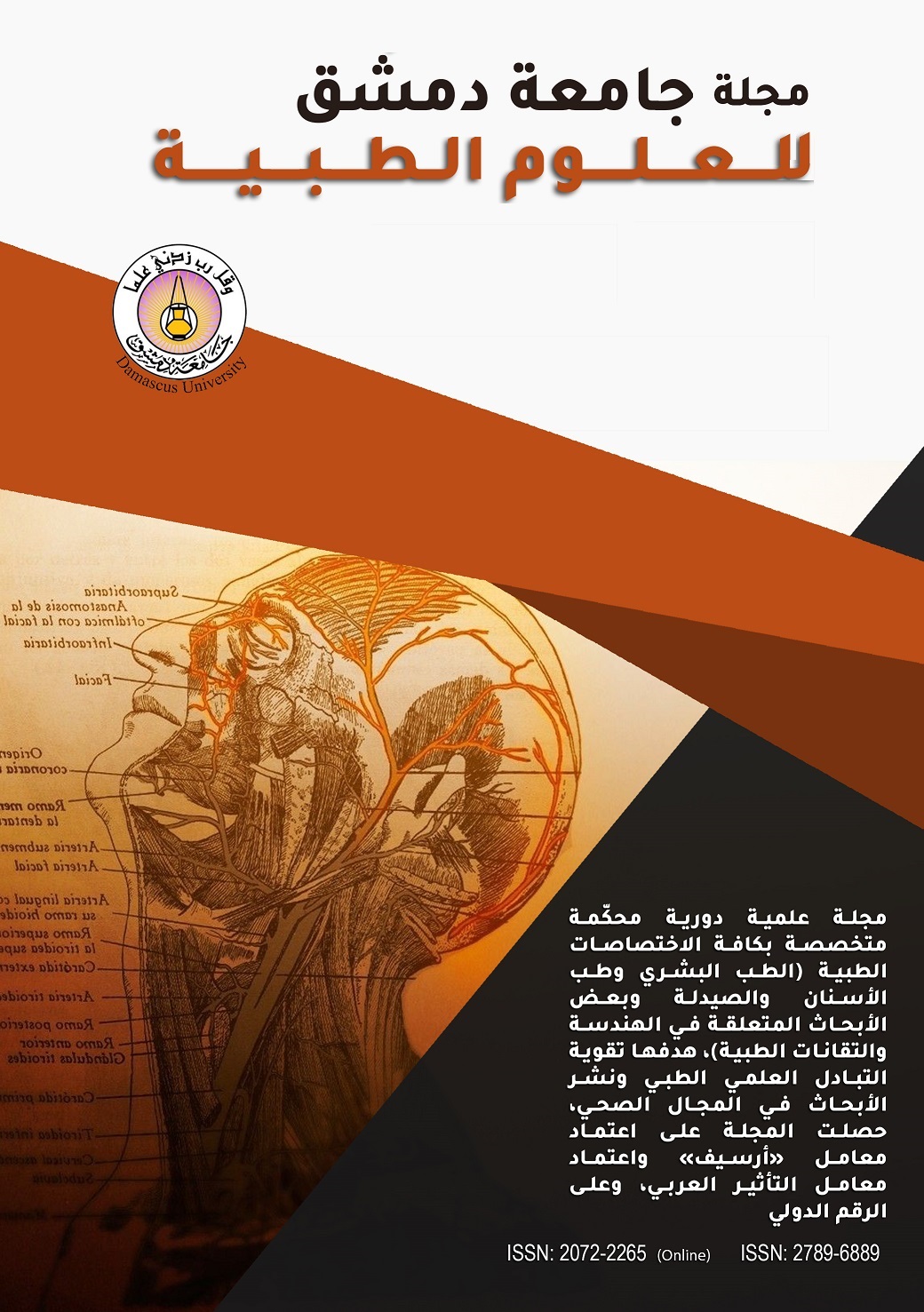The effect of intravenous immunoglobulin as an adjuvant therapy in neonatal sepsis treatment
Abstract
Background &Objective: The neonatal sepsis is the most leading cause of morbidity and mortality in this period, because of easily acquisition of the pathogens, and rapid clinical deterioration, and unfortunately , the newborns especially the preterm have very immature and weak immune system, so the objective of this research is to study the effect of Intravenous immunoglobulin(IVIG) in the neonatal sepsis as an adjuvant therapy.
Materials and Method: This prospective cohort study was carried out for two years in neonatal intensive care unit (NICU), University Children's Hospital at Damascus University, between 1 /11/2010 till 1/10/2012. The patients were divided equally into two groups: (A) the control group, and (B) the patient group, both were received the same antibiotherapeutic protocol, group B had IVIG as an adjuvant therapy.
Results: One hundred fifty patients with neonatal sepsis were included, generally no deference has been noticed between the two main groups, but when they were divided into 17 subgroups , a significant statistical deference (P value<0.05)was noticed in 4 subgroups: preterm infants, septic shock, early onset sepsis, and white blood cell suppression < 5000 cell/mm3(Group B) , the mortality rate as well has been reduced in two subgroups: septic shock, and white blood cell suppression < 5000 cell/mm3 .Also a significant statistical deference was noticed in the duration of hospitalization (P value = 0.045) for Group B.
Conclusion: The use of intravenous immunoglobulin as an adjuvant therapy in neonatal sepsis shows a great effect in some special cases where the immunity system of the newborn is more impaired

